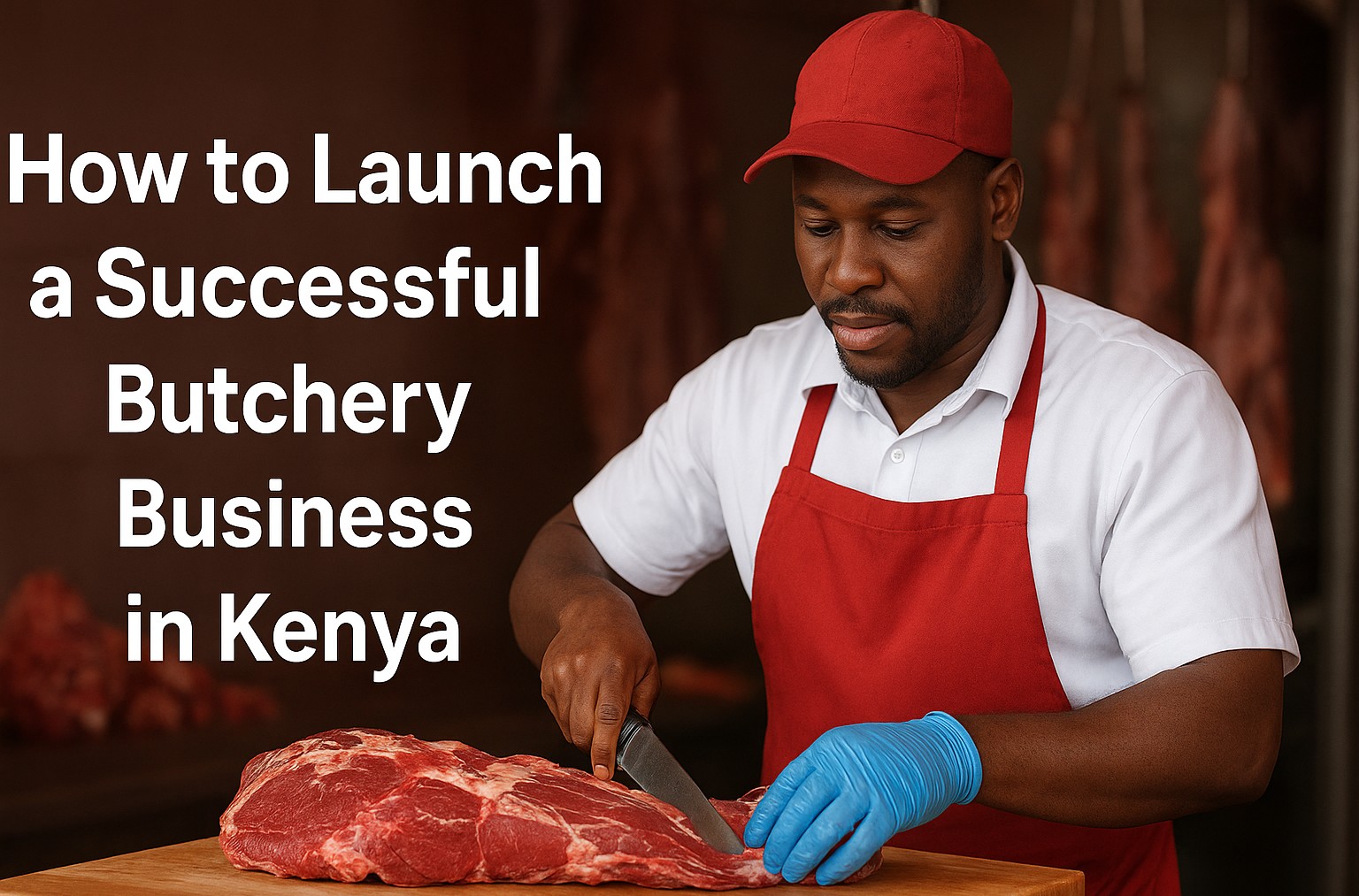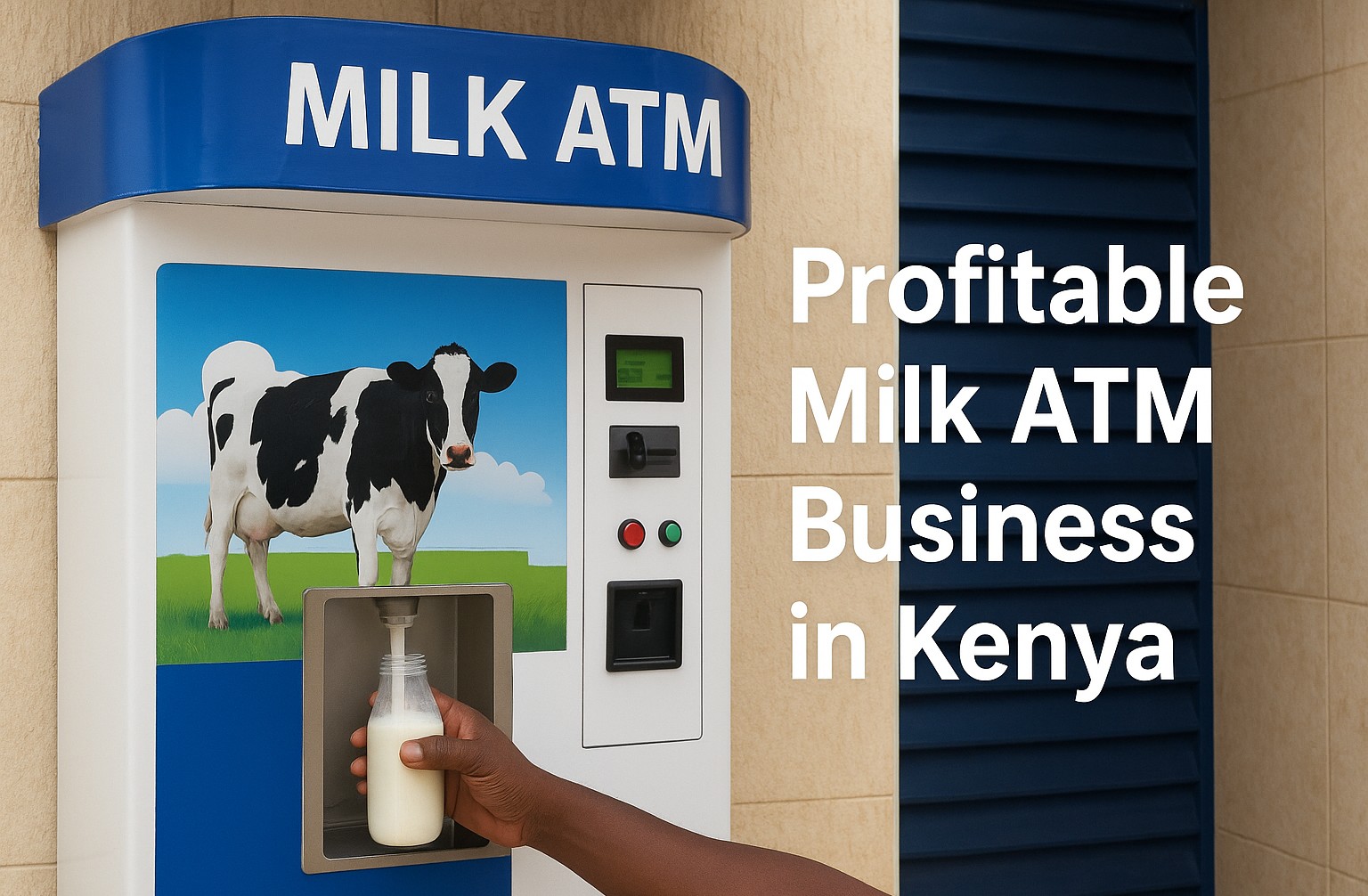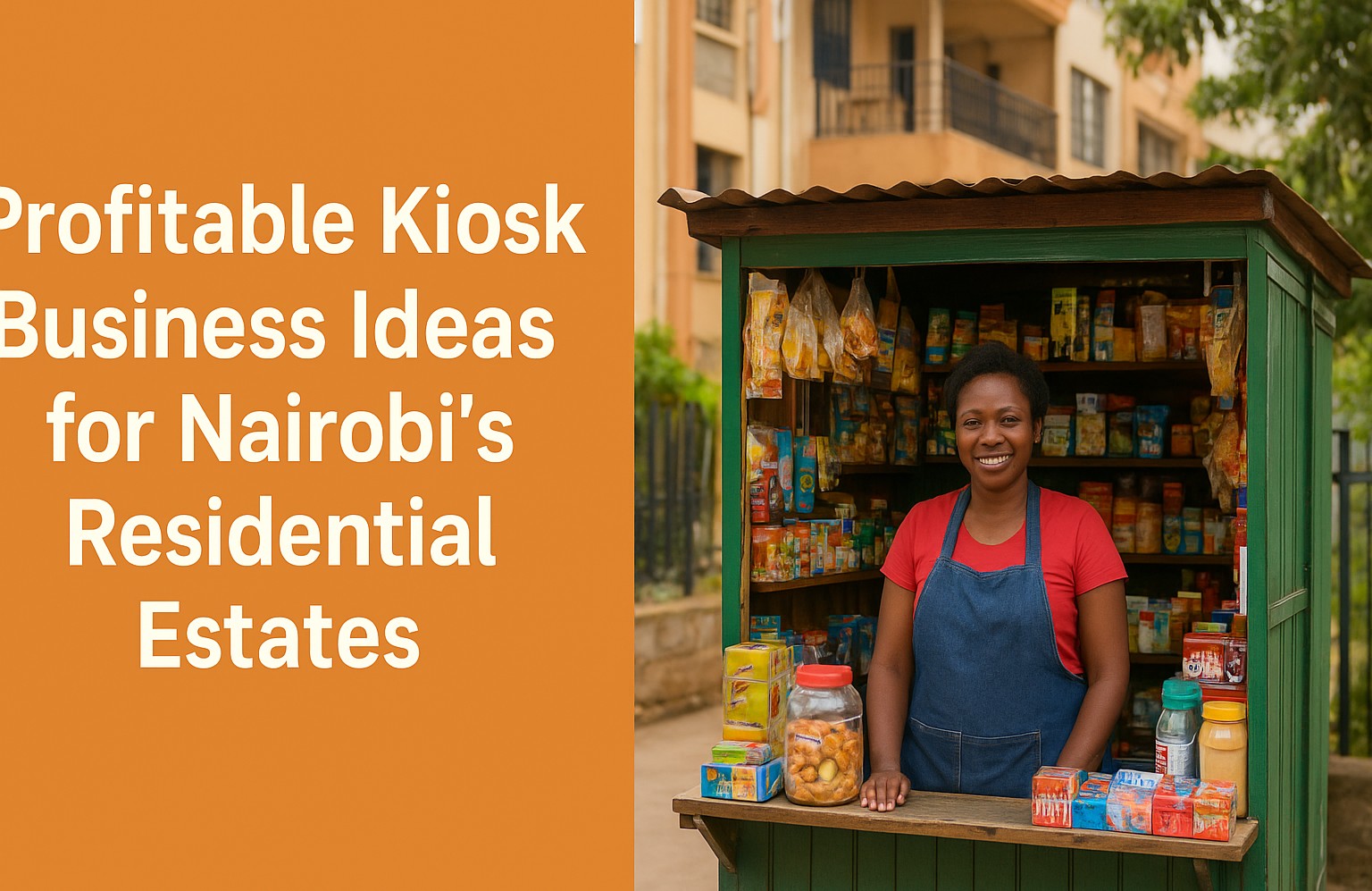

Titus Morebu
Author
How to Launch a Successful Butchery Business in Kenya: Step-by-Step Guide 🥩
Learn how to start a butchery business in Kenya—licenses, location, suppliers, costs, marketing, risks—and build a profitable meat shop from scratch.
So you’re thinking of starting a butchery in Kenya? Great choice! The demand for quality meat is rising as urban populations grow, middle-income households expand, and consumers become more conscious about food safety. But getting started the right way is key to lasting success. This guide will walk you step by step—from market research to launch to growth—on how to build a butchery business in Kenya that stands out and is built to last. 🛠️
1. Evaluate the Market & Choose Your Niche
1.1 Understand customer demand and gaps
- Identify your primary customers: households, roadside eateries (nyama choma joints), hotels, restaurants, institutions (schools, hospitals).
- Survey local butcheries: assess their product mix, quality, pricing, service, and hygiene. Seek gaps: perhaps low-fat cuts, halal meat, value packs, pre-marinated options, or ready-to-grill portions.
- Consider trends: demand for cleaner, traceable meat; convenience (pre-cut, vacuum-packed); and premium or organic offerings.
1.2 Choose your butchery model
- Retail butcher shop: Small to medium, serving walk-in households and small clients.
- Wholesale butcher / supplier: Focus on bulk contracts to hotels, schools, lodges.
- Specialty butcher: Niche focus—organic, grass-fed, exotic meats, halal, processed meats (sausages, burgers).
- Hybrid + value-add: Combine meat retail with nyama choma, meat marination services, or home delivery.
2. Legal & Regulatory Compliance
2.1 Business registration & tax setup
- Register your business (sole proprietorship, partnership, or limited company) via the eCitizen portal.
- Obtain a Personal Identification Number (PIN) from KRA. If your turnover is above the VAT threshold, register for VAT.
2.2 Permits, licenses & health compliance
Operating a butchery in Kenya legally requires multiple permits and approvals from county and national agencies. Requirements differ by county, so always confirm with your local county offices. Below are typical permits:
- Single Business Permit / Trade License: Issued by the county government; essential to operate legally.
- Food Handling / Public Health Permit: For staff handling meat, ensuring they meet hygiene standards and health checks.
- Health Certificate / Premises Inspection: Public health inspectors visit to ensure the premises meets standards (flooring, drainage, cold rooms, waste disposal).
- Fire Safety / Safety Certificate: Fire services inspection and clearance.
- Signage / Advertisement Permit: For your shop signboards, branding outside the premises.
- Environmental / Waste Disposal Permit: For managing effluents, waste water, solid waste, especially from trimming, bones, offal.
The cost for these permits varies by county and type of business. In Nairobi, for example, a single business permit for a butchery in a moderate location may range from ~KSh 7,000 to KSh 15,000 annually, depending on size and location. Counties publish schedule of rates for trade licenses. (Kenya Trade Portal)
2.3 Food safety & standards compliance
- Ensure staff have valid medical / health certificates and are trained in safe meat handling.
- Follow standards for temperature control (cold rooms, refrigerators), hygiene protocols, separate handling for raw and ready-to-eat products.
- Record keeping: maintain traceability, supplier records, cleaning logs, waste logs.
3. Estimate Capital & Breakdown Costs
3.1 Startup costs overview
Your initial investment will depend on size, location, equipment, and your products. Below is a sample approximate budget for a small-to-medium butcher shop:
| Expense Category | Estimated Range (KSh) |
|---|---|
| Permits & Licenses | 5,000 – 15,000 |
| Shop Renovation / Interiors | 20,000 – 60,000 |
| Cold rooms / Freezers / Display Counters | 50,000 – 150,000+ |
| Knives, hooks, boards, tables, cutting tools | 10,000 – 30,000 |
| Scales, packaging, wrapping materials | 5,000 – 20,000 |
| Working capital / initial stock | 30,000 – 80,000 |
| Utilities, electricity, water setup | 5,000 – 20,000 |
Total initial investment may range roughly from KSh 150,000 to 300,000+ depending on scale, location, and equipment quality.
3.2 Revenue, margins & break-even analysis
- Markup margins: Meats are usually marked up at 20–40%, depending on meat type, overheads, and competition.
- Sales volume estimate: In a busy estate location, daily sales might range from 20–50 kg of meat for retail shops; for wholesalers, volumes are higher.
- Breakeven timeline: Many small butcheries aim to recover initial investment within 6–12 months, if well managed.
4. Location, Layout & Shop Setup
4.1 Choosing the ideal location
- High foot traffic areas near residential estates or markets.
- Close proximity to your key clients: restaurants, eateries, institutions.
- Good accessibility for delivery trucks and suppliers.
- Security, utilities (power, water), drainage, waste disposal, ventilation.
4.2 Store layout & design tips
- Separate rooms or zones: cold storage, prep area, customer display / counter area.
- Cold room or walk-in freezer behind the counter; display chillers at front.
- Use stainless steel, hygienic, easy-to-clean surfaces for tables, walls, floors.
- Make the customer area visible, bright, clean—good display increases trust and sales.
- Plan adequate drainage, sewage system, staff wash area, cleaning station.
5. Procuring & Managing Meat Supply
5.1 Identifying reliable suppliers
- Licensed local slaughterhouses or abattoirs—ensure they operate under health standards.
- Farmers or cooperatives—visit the farms, inspect practices (feed, animal health).
- Wholesale meat distributors operating in bulk markets (e.g. in Nairobi, major meat markets like Burma market, Dagoretti, Kiserian).
5.2 Building supplier relationships
- Set clear quality, delivery, and payment terms.
- Negotiate volumes, discounts, minimum orders, and credit terms where possible.
- Maintain open communication and periodic quality audits.
5.3 Meat handling, storage & inventory control
- Temperature control: maintain proper cold chain from supplier to shop—use boxes, ice, refrigerated transport if needed.
- First-In-First-Out (FIFO): always sell the oldest stock first to avoid spoilage.
- Separate raw and ready-to-cook / marinated meats to avoid cross-contamination.
- Record keeping: track stock, weights, losses (shrinkage), waste, and supplier batches.
- Minimize overstocking to reduce spoilage; order in smaller, more frequent batches instead of bulk for long periods.
6. Staffing, Operations & Daily Management
6.1 Staff roles & hiring criteria
- Butchers with meat-cutting skills, knowledge of meat grades and cuts.
- Staff for cleaning and hygiene, with training in sanitization and safety.
- Customer service / cashier staff who are courteous, honest, and organized.
- Supervisor or manager (in larger shops) to oversee operations, stock, and compliance.
6.2 Training & standard operating procedures (SOPs)
- Train all staff on hygiene, glove use, sanitizing, cross-contamination protocols.
- Develop SOPs for meat handling, cleaning cycles, waste disposal, equipment maintenance.
- Conduct regular quality checks and audits to maintain standards.
6.3 Daily operations checklist
- Opening checks: cold rooms, display chillers, cleaning, staff readiness.
- Stocking & display: fresh cuts, rotate displays to highlight specials.
- Sales, weighing, packaging, customer service.
- Closing tasks: record daily sales, reconcile stock, clean thoroughly, proper waste disposal.
7. Pricing Strategy & Product Mix
7.1 Product mix ideas
- Beef, goat/mutton, chicken, pork (where legal and accepted), fish or seafood in some settings.
- Value-added products: minced meat, burgers, sausages, marinated cuts, offal, bone broth, packaged meat.
- Ready-to-cook packs, family packs, bulk discounts.
7.2 Pricing methods
- Cost-plus: Add a fixed margin to your cost (including overheads).
- Market-based: Monitor competitor pricing and adjust to stay competitive.
- Tiered pricing: Premium cuts at higher margin; lower grade cuts at lower margin.
- Promotional pricing: Discounts for bundles, loyalty customers, slow-moving stock.
8. Marketing, Branding & Customer Engagement
- Create an appealing brand: logo, signage, shop aesthetics, uniforms.
- Use social media (Facebook, Instagram, WhatsApp) to post daily specials, deals, fresh stock alerts.
- Offer home delivery or neighborhood delivery services for convenience.
- Introduce loyalty programs: punch cards, discounts for repeat buyers.
- Partner with local restaurants, hotels, caterers to supply meat or partner deals.
- Offer tastings, recipe ideas, cooking tips for customers to build trust and loyalty.
9. Risks, Challenges & Mitigation Strategies
9.1 Common challenges
- Spoilage and wastage due to poor inventory control or power cuts.
- Price fluctuations in livestock feed, supply, or transport.
- Theft or internal pilferage—inventory discrepancies (noted in high-risk retail settings).
- Strong competition from other butcheries, supermarkets, cold stores.
- Regulatory non-compliance: fines or closure due to health violations.
9.2 Mitigation & risk controls
- Backup power (generator or inverter) to protect cold storage during outages.
- Strict inventory tracking, periodic audits, use of CCTV or oversight.
- Multiple suppliers to reduce reliance and negotiating power.
- Constant quality and hygiene checks to avoid regulatory issues and build reputation.
- Customer feedback loops to fix issues early and maintain trust.
10. Growth & Scaling Strategies
- Expand to additional branches in strategic areas.
- Introduce meat processing lines: sausages, marinated meats, cold cuts.
- Start supplying to larger clients: hotels, lodges, schools, prisons.
- Set up online ordering and delivery app or integrate with food delivery platforms.
- Brand extension: partner with restaurants, open a nyama choma joint, or open an integrated farm-to-table model.
Conclusion
Starting a butchery business in Kenya is challenging but highly rewarding when done with careful planning, compliance, and attention to quality and service. By focusing on the right location, hygiene, suppliers, branding, and customer loyalty, you can build a profitable, scalable meat business. Stay agile, track your costs and margins, and continuously improve operations. Good luck on your butchery entrepreneurship journey! 🥩📈
Gallery

Related Articles
3 articles
Profitable Milk ATM Business in Kenya: A Complete 2025 Guide 🥛
Discover how to launch and scale a milk ATM business in Kenya in 2025 — startup costs, revenue models, compliance, growth tips, and real success stories.

How to Start a Hardware Shop in Kenya: A Practical, Up-to-Date Guide 🛠️
Thinking of launching a hardware shop in Kenya? Learn how to research, register, stock, market, and manage one profitably using modern tools and strategies.

Profitable Kiosk Business Ideas for Nairobi’s Residential Estates 💡
Discover high-return kiosk ideas suited to Nairobi estates. Learn startup tips, location insights & digital enhancements to build a sustainable, profitable mini-business.